Jianhua Zhang
A Novel Multi-Reference-Point Modeling Framework for Monostatic Background Channel: Toward 3GPP ISAC Standardization
Nov 05, 2025Abstract:Integrated Sensing and Communication (ISAC) has been identified as a key 6G application by ITU and 3GPP. A realistic, standard-compatible channel model is essential for ISAC system design. To characterize the impact of Sensing Targets (STs), 3GPP defines ISAC channel as a combination of target and background channels, comprising multipath components related to STs and those originating solely from the environment, respectively. Although the background channel does not carry direct ST information, its accurate modeling is critical for evaluating sensing performance, especially in complex environments. Existing communication standards characterize propagation between separated transmitter (Tx) and receiver (Rx). However, modeling background channels in the ISAC monostatic mode, where the Tx and Rx are co-located, remains a pressing challenge. In this paper, we firstly conduct ISAC monostatic background channel measurements for an indoor scenario at 28 GHz. Realistic channel parameters are extracted, revealing pronounced single-hop propagation and discrete multipath distribution. Inspired by these properties, a novel stochastic model is proposed to characterizing the ISAC monostatic background channel as the superposition of sub-channels between the monostatic Tx&Rx and multiple communication Rx-like Reference Points (RPs). This model is compatible with standardizations, and a 3GPP-extended implementation framework is introduced. Finally, a genetic algorithm-based method is proposed to extract the optimal number and placement of multi-RPs. The optimization approach and modeling framework are validated by comparing measured and simulated channel parameters. Results demonstrate that the proposed model effectively captures monostatic background channel characteristics, addresses a critical gap in ISAC channel modeling, and supports 6G standardization.
Solar PV Installation Potential Assessment on Building Facades Based on Vision and Language Foundation Models
Oct 01, 2025
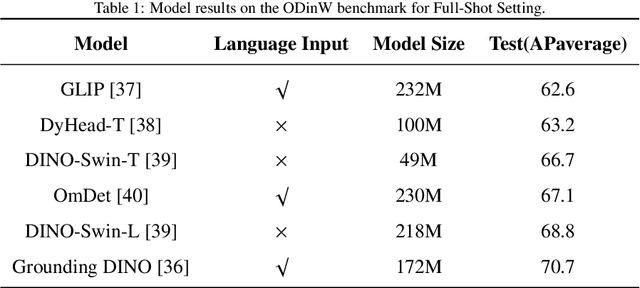
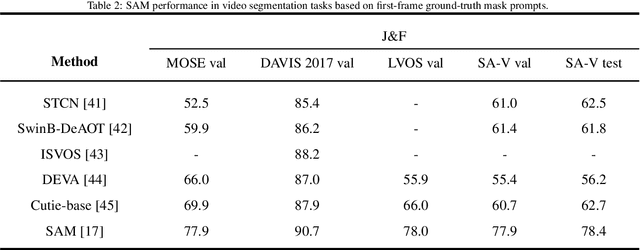

Abstract:Building facades represent a significant untapped resource for solar energy generation in dense urban environments, yet assessing their photovoltaic (PV) potential remains challenging due to complex geometries and semantic com ponents. This study introduces SF-SPA (Semantic Facade Solar-PV Assessment), an automated framework that transforms street-view photographs into quantitative PV deployment assessments. The approach combines com puter vision and artificial intelligence techniques to address three key challenges: perspective distortion correction, semantic understanding of facade elements, and spatial reasoning for PV layout optimization. Our four-stage pipeline processes images through geometric rectification, zero-shot semantic segmentation, Large Language Model (LLM) guided spatial reasoning, and energy simulation. Validation across 80 buildings in four countries demonstrates ro bust performance with mean area estimation errors of 6.2% ± 2.8% compared to expert annotations. The auto mated assessment requires approximately 100 seconds per building, a substantial gain in efficiency over manual methods. Simulated energy yield predictions confirm the method's reliability and applicability for regional poten tial studies, urban energy planning, and building-integrated photovoltaic (BIPV) deployment. Code is available at: https:github.com/CodeAXu/Solar-PV-Installation
Lightweight Deep Unfolding Networks with Enhanced Robustness for Infrared Small Target Detection
Sep 10, 2025Abstract:Infrared small target detection (ISTD) is one of the key techniques in image processing. Although deep unfolding networks (DUNs) have demonstrated promising performance in ISTD due to their model interpretability and data adaptability, existing methods still face significant challenges in parameter lightweightness and noise robustness. In this regard, we propose a highly lightweight framework based on robust principal component analysis (RPCA) called L-RPCANet. Technically, a hierarchical bottleneck structure is constructed to reduce and increase the channel dimension in the single-channel input infrared image to achieve channel-wise feature refinement, with bottleneck layers designed in each module to extract features. This reduces the number of channels in feature extraction and improves the lightweightness of network parameters. Furthermore, a noise reduction module is embedded to enhance the robustness against complex noise. In addition, squeeze-and-excitation networks (SENets) are leveraged as a channel attention mechanism to focus on the varying importance of different features across channels, thereby achieving excellent performance while maintaining both lightweightness and robustness. Extensive experiments on the ISTD datasets validate the superiority of our proposed method compared with state-of-the-art methods covering RPCANet, DRPCANet, and RPCANet++. The code will be available at https://github.com/xianchaoxiu/L-RPCANet.
Digital Twin Channel-Aided CSI Prediction: A Environment-based Subspace Extraction Approach for Achieving Low Overhead and Robustness
Aug 07, 2025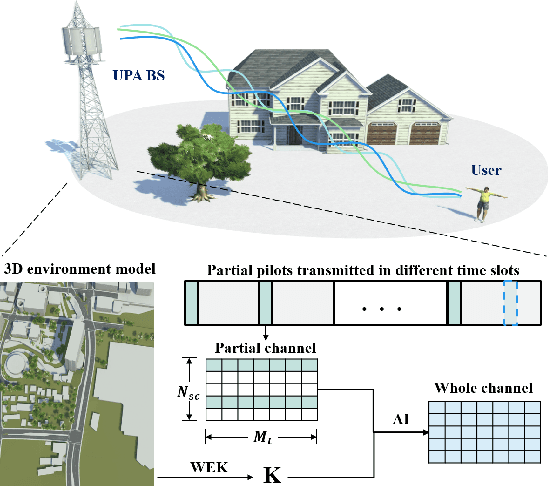
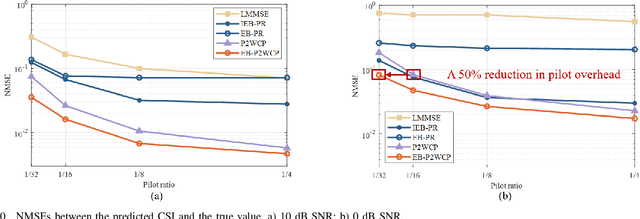
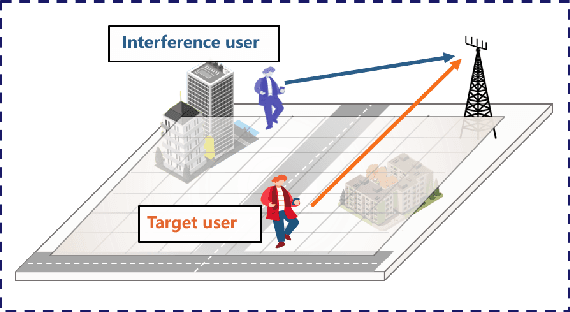

Abstract:To meet the robust and high-speed communication requirements of the sixth-generation (6G) mobile communication system in complex scenarios, sensing- and artificial intelligence (AI)-based digital twin channel (DTC) techniques become a promising approach to reduce system overhead. In this paper, we propose an environment-specific channel subspace basis (EB)-aided partial-to-whole channel state information (CSI) prediction method (EB-P2WCP) for realizing DTC-enabled low-overhead channel prediction. Specifically, EB is utilized to characterize the static properties of the electromagnetic environment, which is extracted from the digital twin map, serving as environmental information prior to the prediction task. Then, we fuse EB with real-time estimated local CSI to predict the entire spatial-frequency domain channel for both the present and future time instances. Hence, an EB-based partial-to-whole CSI prediction network (EB-P2WNet) is designed to achieve a robust channel prediction scheme in various complex scenarios. Simulation results indicate that incorporating EB provides significant benefits under low signal-to-noise ratio and pilot ratio conditions, achieving a reduction of up to 50% in pilot overhead. Additionally, the proposed method maintains robustness against multi-user interference, tolerating 3-meter localization errors with only a 0.5 dB NMSE increase, and predicts CSI for the next channel coherent time within 1.3 milliseconds.
Multi-Modal Large Models Based Beam Prediction: An Example Empowered by DeepSeek
Jun 06, 2025Abstract:Beam prediction is an effective approach to reduce training overhead in massive multiple-input multiple-output (MIMO) systems. However, existing beam prediction models still exhibit limited generalization ability in diverse scenarios, which remains a critical challenge. In this paper, we propose MLM-BP, a beam prediction framework based on the multi-modal large model released by DeepSeek, with full consideration of multi-modal environmental information. Specifically, the distribution of scatterers that impact the optimal beam is captured by the sensing devices. Then positions are tokenized to generate text-based representations, and multi-view images are processed by an image encoder, which is fine-tuned with low-rank adaptation (LoRA), to extract environmental embeddings. Finally, these embeddings are fed into the large model, and an output projection module is designed to determine the optimal beam index. Simulation results show that MLM-BP achieves 98.1% Top-1 accuracy on the simulation dataset. Additionally, it demonstrates few-shot generalization on a real-world dataset, achieving 72.7% Top-1 accuracy and 92.4% Top-3 accuracy with only 30% of the dataset, outperforming the existing small models by over 15%.
STAR-Net: An Interpretable Model-Aided Network for Remote Sensing Image Denoising
May 30, 2025Abstract:Remote sensing image (RSI) denoising is an important topic in the field of remote sensing. Despite the impressive denoising performance of RSI denoising methods, most current deep learning-based approaches function as black boxes and lack integration with physical information models, leading to limited interpretability. Additionally, many methods may struggle with insufficient attention to non-local self-similarity in RSI and require tedious tuning of regularization parameters to achieve optimal performance, particularly in conventional iterative optimization approaches. In this paper, we first propose a novel RSI denoising method named sparse tensor-aided representation network (STAR-Net), which leverages a low-rank prior to effectively capture the non-local self-similarity within RSI. Furthermore, we extend STAR-Net to a sparse variant called STAR-Net-S to deal with the interference caused by non-Gaussian noise in original RSI for the purpose of improving robustness. Different from conventional iterative optimization, we develop an alternating direction method of multipliers (ADMM)-guided deep unrolling network, in which all regularization parameters can be automatically learned, thus inheriting the advantages of both model-based and deep learning-based approaches and successfully addressing the above-mentioned shortcomings. Comprehensive experiments on synthetic and real-world datasets demonstrate that STAR-Net and STAR-Net-S outperform state-of-the-art RSI denoising methods.
A Unified RCS Modeling of Typical Targets for 3GPP ISAC Channel Standardization and Experimental Analysis
May 27, 2025



Abstract:Accurate radar cross section (RCS) modeling is crucial for characterizing target scattering and improving the precision of Integrated Sensing and Communication (ISAC) channel modeling. Existing RCS models are typically designed for specific target types, leading to increased complexity and lack of generalization. This makes it difficult to standardize RCS models for 3GPP ISAC channels, which need to account for multiple typical target types simultaneously. Furthermore, 3GPP models must support both system-level and link-level simulations, requiring the integration of large-scale and small-scale scattering characteristics. To address these challenges, this paper proposes a unified RCS modeling framework that consolidates these two aspects. The model decomposes RCS into three components: (1) a large-scale power factor representing overall scattering strength, (2) a small-scale angular-dependent component describing directional scattering, and (3) a random component accounting for variations across target instances. We validate the model through mono-static RCS measurements for UAV, human, and vehicle targets across five frequency bands. The results demonstrate that the proposed model can effectively capture RCS variations for different target types. Finally, the model is incorporated into an ISAC channel simulation platform to assess the impact of target RCS characteristics on path loss, delay spread, and angular spread, providing valuable insights for future ISAC system design.
Empirical Study on Near-Field and Spatial Non-Stationarity Modeling for THz XL-MIMO Channel in Indoor Scenario
May 14, 2025Abstract:Terahertz (THz) extremely large-scale MIMO (XL-MIMO) is considered a key enabling technology for 6G and beyond due to its advantages such as wide bandwidth and high beam gain. As the frequency and array size increase, users are more likely to fall within the near-field (NF) region, where the far-field plane-wave assumption no longer holds. This also introduces spatial non-stationarity (SnS), as different antenna elements observe distinct multipath characteristics. Therefore, this paper proposes a THz XL-MIMO channel model that accounts for both NF propagation and SnS, validated using channel measurement data. In this work, we first conduct THz XL-MIMO channel measurements at 100 GHz and 132 GHz using 301- and 531-element ULAs in indoor environments, revealing pronounced NF effects characterized by nonlinear inter-element phase variations, as well as element-dependent delay and angle shifts. Moreover, the SnS phenomenon is observed, arising not only from blockage but also from inconsistent reflection or scattering. Based on these observations, a hybrid NF channel modeling approach combining the scatterer-excited point-source model and the specular reflection model is proposed to capture nonlinear phase variation. For SnS modeling, amplitude attenuation factors (AAFs) are introduced to characterize the continuous variation of path power across the array. By analyzing the statistical distribution and spatial autocorrelation properties of AAFs, a statistical rank-matching-based method is proposed for their generation. Finally, the model is validated using measured data. Evaluation across metrics such as entropy capacity, condition number, spatial correlation, channel gain, Rician K-factor, and RMS delay spread confirms that the proposed model closely aligns with measurements and effectively characterizes the essential features of THz XL-MIMO channels.
A Unified Deterministic Channel Model for Multi-Type RIS with Reflective, Transmissive, and Polarization Operations
May 12, 2025Abstract:Reconfigurable Intelligent Surface (RIS) technologies have been considered as a promising enabler for 6G, enabling advantageous control of electromagnetic (EM) propagation. RIS can be categorized into multiple types based on their reflective/transmissive modes and polarization control capabilities, all of which are expected to be widely deployed in practical environments. A reliable RIS channel model is essential for the design and development of RIS communication systems. While deterministic modeling approaches such as ray-tracing (RT) offer significant benefits, a unified model that accommodates all RIS types is still lacking. This paper addresses this gap by developing a high-precision deterministic channel model based on RT, supporting multiple RIS types: reflective, transmissive, hybrid, and three polarization operation modes. To achieve this, a unified EM response model for the aforementioned RIS types is developed. The reflection and transmission coefficients of RIS elements are derived using a tensor-based equivalent impedance approach, followed by calculating the scattered fields of the RIS to establish an EM response model. The performance of different RIS types is compared through simulations in typical scenarios. During this process, passive and lossless constraints on the reflection and transmission coefficients are incorporated to ensure fairness in the performance evaluation. Simulation results validate the framework's accuracy in characterizing the RIS channel, and specific cases tailored for dual-polarization independent control and polarization rotating RISs are highlighted as insights for their future deployment. This work can be helpful for the evaluation and optimization of RIS-enabled wireless communication systems.
Node2Vec-DGI-EL: A Hierarchical Graph Representation Learning Model for Ingredient-Disease Association Prediction
May 01, 2025Abstract:Traditional Chinese medicine, as an essential component of traditional medicine, contains active ingredients that serve as a crucial source for modern drug development, holding immense therapeutic potential and development value. A multi-layered and complex network is formed from Chinese medicine to diseases and used to predict the potential associations between Chinese medicine ingredients and diseases. This study proposes an ingredient-disease association prediction model (Node2Vec-DGI-EL) based on hierarchical graph representation learning. First, the model uses the Node2Vec algorithm to extract node embedding vectors from the network as the initial features of the nodes. Next, the network nodes are deeply represented and learned using the DGI algorithm to enhance the model's expressive power. To improve prediction accuracy and robustness, an ensemble learning method is incorporated to achieve more accurate ingredient-disease association predictions. The effectiveness of the model is then evaluated through a series of theoretical verifications. The results demonstrated that the proposed model significantly outperformed existing methods, achieving an AUC of 0.9987 and an AUPR of 0.9545, thereby indicating superior predictive capability. Ablation experiments further revealed the contribution and importance of each module. Additionally, case studies explored potential associations, such as triptonide with hypertensive retinopathy and methyl ursolate with colorectal cancer. Molecular docking experiments validated these findings, showing the triptonide-PGR interaction and the methyl ursolate-NFE2L2 interaction can bind stable. In conclusion, the Node2Vec-DGI-EL model focuses on TCM datasets and effectively predicts ingredient-disease associations, overcoming the reliance on node semantic information.
 Add to Chrome
Add to Chrome Add to Firefox
Add to Firefox Add to Edge
Add to Edge